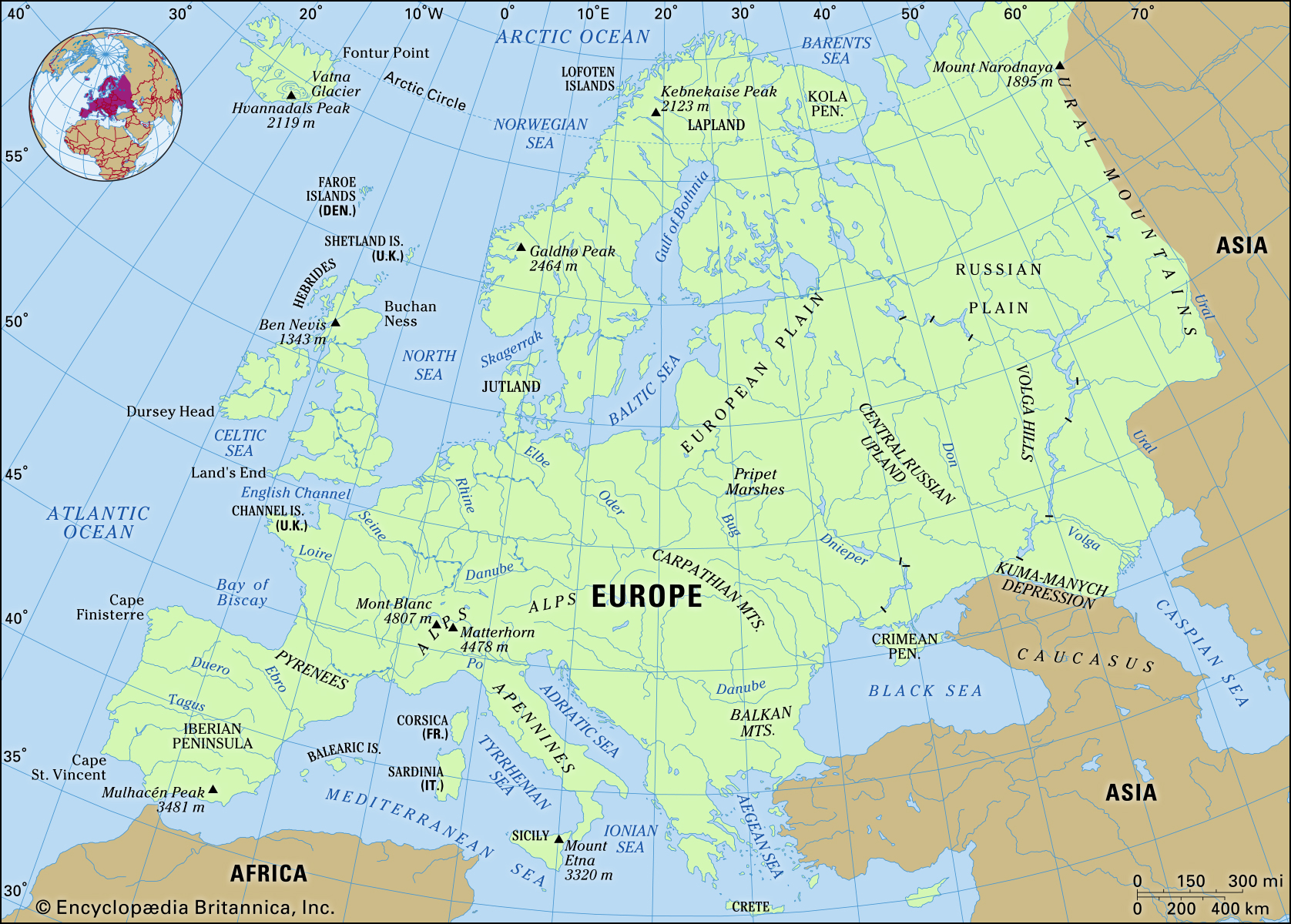Europe is surrounded by seas, none of them large or very deep, but they are hugely rich ecologically and culturally. The continent is bound by the Atlantic, the Arctic Ocean, the Black Sea and the Mediterranean. The Baltic is entirely within Europe. Each of these is subdivided into smaller seas and straits.
The largest of Europe’s seas is the Mediterranean. As so evident in its name, which comes from the Latin for ‘middle of the land’, it is almost entirely surrounded by land. Its southern coast is formed by Africa; its northern coast by Europe; and the west by Anatolia and the Levant. Only the narrow Strait of Gibraltar in the west and the even narrower Bosphorus in the east stop it from being completely landlocked.
Around its shores, many of the great ancient civilizations were built – from the Minoans and Phoenicians to the Greeks and the Romans – and today it has one of the busiest, most populated coastlines in the world. It can be a place of stunning beauty, and its sparkling blue seas, pleasant climate, and myriad islands have inspired poets and pleasure seekers for thousands of years. Yet its very popularity has put its rich marine ecosystem under threat.
Surrounded by some of the world’s largest cities and industrial centers, Europe’s northern seas, the North and the Baltic, are likewise under immense pressure. Overfishing, pollution, shipping, and many other activities have taken their toll on the ecosystem and despite its remarkable resilience, it is perhaps reaching crisis point.
Then, Which are the 7 seas? The Seven Seas include the Arctic, North Atlantic, South Atlantic, North Pacific, South Pacific, Indian, and Southern oceans. The exact origin of the phrase ‘Seven Seas’ is uncertain, although there are references in ancient literature that date back thousands of years.

